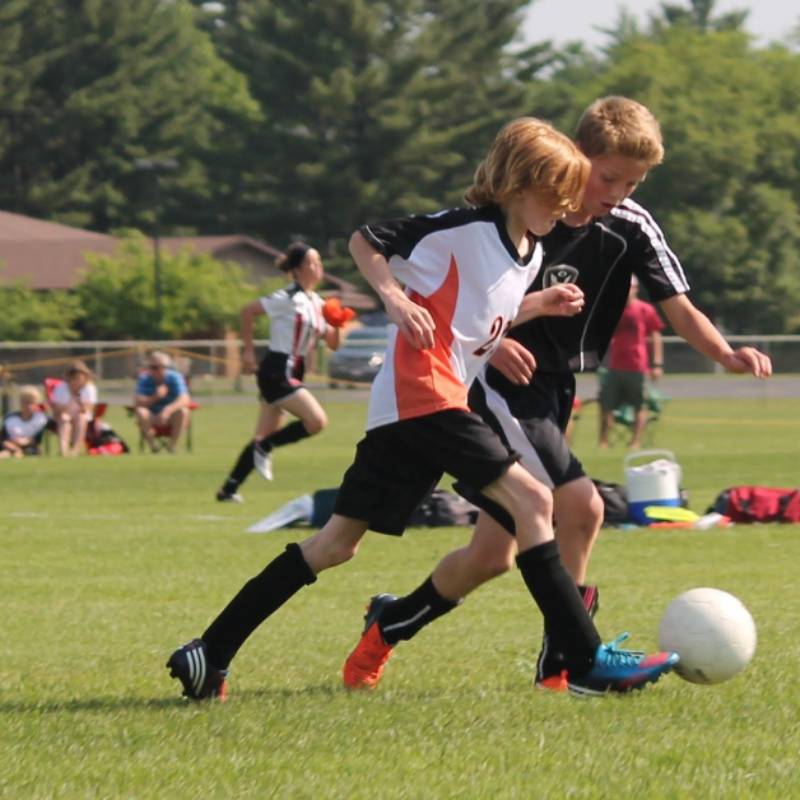Consequences of bullying in sport

Bullying is a fairly common problem, but it’s even more prevalent in sports environments. These environments are often highly competitive, which makes them conducive to bullying behavior. It is estimated that between 10% and 15% of young people involved in team sports are victims of bullying.
Bullying in sport refers to any behavior that intentionally impairs the performance of another player or threatens the physical and emotional well-being of another person involved in the game.
It is therefore a form of violence that can have serious repercussions for its victims. Unfortunately, there’s a culture of silence around bullying. Victims and witnesses often don’t dare report the situation for fear of reprisals.
What is bullying?
Bullying is a form of abuse that occurs when a person intentionally and repeatedly causes another person to feel intimidated, threatened or mistreated. Bullying behavior can take many forms, including physical, verbal and psychological attacks. These behaviors are often the work of a small group, not a single individual.
It’s important for players to be able to recognize bullying, so that they can report such unacceptable behavior. It’s important to be alert to what’s going on, because bullying isn’t always obvious to detect, as the behaviors are subtle and difficult for outsiders to notice. Often, the bullying group will not behave in this way in front of a responsible person.
What is cyberbullying?
Cyberbullying is another form of bullying that takes place on digital devices such as cell phones, computers and tablets. With the growing presence of technology, it’s a form of bullying that’s becoming increasingly widespread. It involves sending, publishing or sharing negative, harmful, false or nasty content about another person. The aim is to harm or humiliate the other person.
Reasons for bullying in sports
There are many reasons for bullying in sport. In team sports, the notions of competition and performance are very present. Even if team members share the same goals, a climate of competition can sometimes develop between certain players. In fact, many athletes are bullied because their teammates see them as a threat.
On the other hand, one player may bully another to gain power or social acceptance among his peers. He may lack empathy for his team-mates and not care about the distress he causes his victim.
The bully may also have been bullied in the past, or may have been influenced by aggressive role models at home or on television. Some parents have very high expectations of their children, and do not accept their failures. Their behavior can therefore have repercussions on their children’s behavior.
What are the negative effects of bullying in sport?
Giving up sport
Young people who are victims of bullying may decide to give up the sport they’re playing. In fact, intimidating behaviour means that the player will no longer enjoy the activity, and may even impair his or her performance. Instead of being an enjoyable way of letting off steam, practice can turn into a highly anxiety-provoking situation.
Change of sport
Young athletes who are bullied may decide to change sports, despite the fact that they are very talented and enjoy the activity in question. They may feel that there is no other way to end the situation. As a result, some young people may miss out on great opportunities because of the toxic climate that led them to change sports.
Reduced commitment
Intimidation can also lead to reduced commitment on the part of the player. They may regularly miss practice or arrive late. They may not push themselves during practice and adopt a nonchalant attitude. These elements can have an impact on the whole team, creating an unpleasant climate.
Isolation
Isolation is another consequence of bullying. Bullied players tend to distance themselves from others. He will voluntarily distance himself from the coach and other athletes to reduce contact with them. This, of course, leads to isolation and loneliness.
Mental health
Mental health is a very important issue when it comes to bullying. Young people who are victims of bullying are more likely to develop an anxiety disorder or suffer from depression. In addition, bullying can lead to a loss of self-confidence and self-esteem. This can affect interpersonal relationships and school performance.
School performance
School performance can also be affected by bullying. Young people who are bullied often experience a deterioration in their school results. This can be explained by lower motivation, difficulty concentrating and higher levels of absenteeism.
It should be noted that bullying can have an impact on an entire sports team. This was the case with the Séminaire Saint-François cadet soccer team. The team was forced to forfeit due to bullying behavior within the team.
Preventing bullying in sport
Bullying prevention is not just one person’s responsibility. In fact, every stakeholder has a role to play in preventing bullying in sport.
Parents’ roles
Parents obviously need to be role models for their children, because their actions will have an impact on their children’s behavior. Sometimes, some parents are more difficult to deal with, but don’t worry, there are various ways of dealing with difficult parents.
Parents need to set a good example by behaving appropriately during games, with other parents and with the other youngsters on the team. They can also maintain open communication with the coach and with their child, so as to be aware of any problematic situations that may arise.
If parents witness bullying, whether or not it involves their children, they should bring the situation to the attention of the coach or another resource person.
Other players’ roles
Other players need to be aware of what’s going on and not ignore situations that seem problematic. They need to be made aware of the resources available so they know what to do if they witness or experience bullying.
Coaches’ roles
Coaches are also role models for players. They must not only set a good example, but also reinforce positive behavior. Their goal is to ensure that the sporting environment remains safe and respectful. In this sense, any behavior that is intended to intimidate or resembles bullying must not be tolerated.
Moreover, by emphasizing team-building activities and fostering a friendly environment, bullying can be reduced. The key is to create an open environment where young people feel comfortable expressing themselves if something isn’t right.
It’s also important to let young people know that bullying behavior is not acceptable, and that anyone who experiences or witnesses it should talk to an adult. Conversations aimed at raising player awareness are therefore a good way of curbing bullying before it happens.
Obviously, highly competitive environments that encourage winning at all costs are more likely to encourage bullying behavior. On the other hand, bullying behavior is less likely to occur when fun, teamwork, sportsmanship and skill development are prioritized.
Don't miss our new year-end gala organization guide!
Karl Demers



